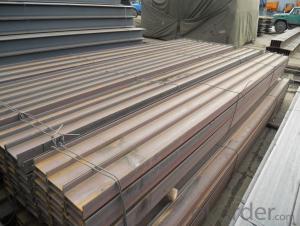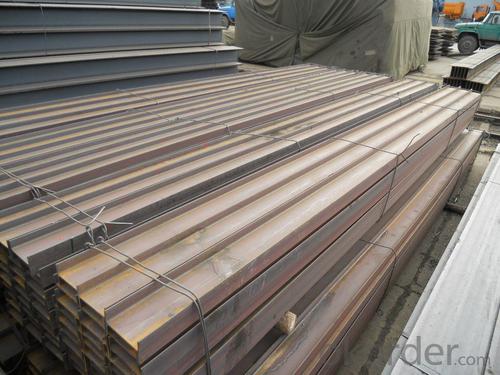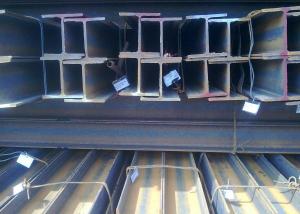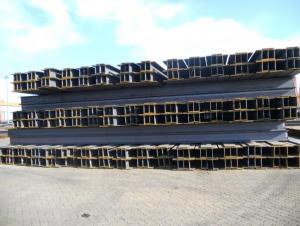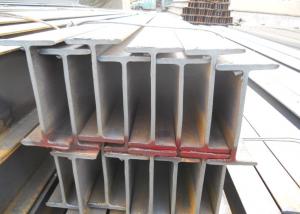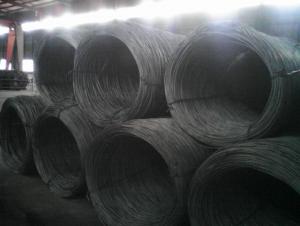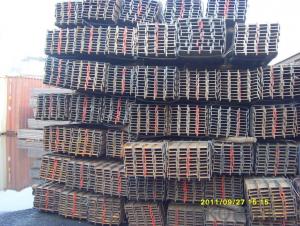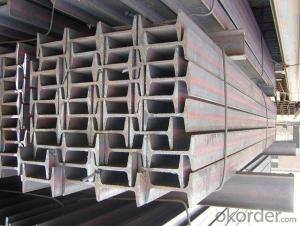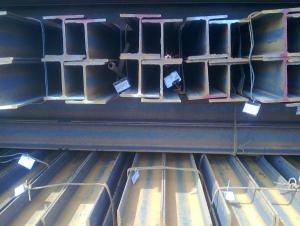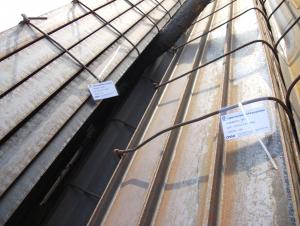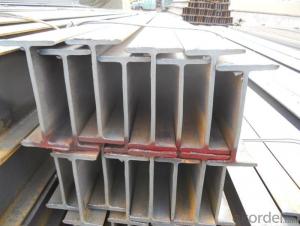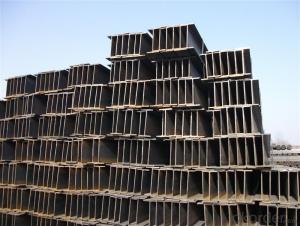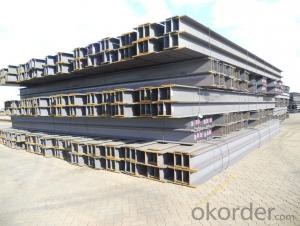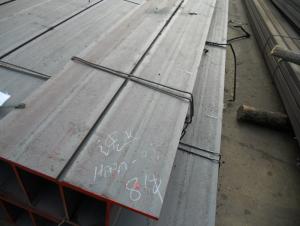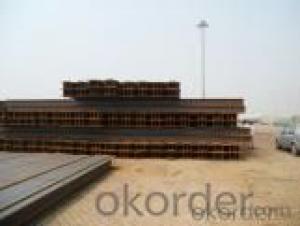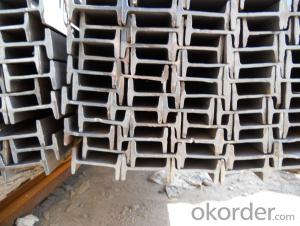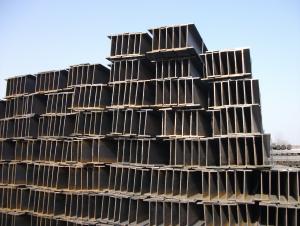Hot Rolled Steel High Qulity H-BEAM Made In China
- Loading Port:
- Tianjin
- Payment Terms:
- TT OR LC
- Min Order Qty:
- 25 m.t.
- Supply Capability:
- 5000 m.t./month
OKorder Service Pledge
OKorder Financial Service
You Might Also Like
Specification
Product Description:
OKorder is offering Hot Rolled Steel High Qulity H-BEAM Made In China at great prices with worldwide shipping. Our supplier is a world-class manufacturer of steel, with our products utilized the world over. OKorder annually supplies products to European, North American and Asian markets. We provide quotations within 24 hours of receiving an inquiry and guarantee competitive prices.
Product Applications:
Hot Rolled Steel High Qulity H-BEAM Made In China are ideal for structural applications and are widely used in the construction of buildings and bridges, and the manufacturing, petrochemical, and transportation industries.
Product Advantages:
OKorder's Hot Rolled Steel High Qulity H-BEAM Made In China are durable, strong, and resist corrosion.
Main Product Features:
· Premium quality
· Prompt delivery & seaworthy packing (30 days after receiving deposit)
· Corrosion resistance
· Can be recycled and reused
· Mill test certification
· Professional Service
· Competitive pricing
Product Specifications:
SIZE(mm) | DIMENSION(kg/m) |
100*100 | 16.9 |
125*125 | 23.6 |
150*75 | 14 |
150*150 | 31.1 |
148*100 | 20.7 |
198*99 | 17.8 |
200*100 | 20.9 |
248*124 | 25.1 |
250*125 | 29 |
300*150 | 36.7 |
298*149 | 32 |
200*200 | 49.9 |
294*200 | 55.8 |
346*174 | 41.2 |
350*175 | 49.4 |
244*175 | 43.6 |
175*175 | 40.4 |
294*200 | 55.8 |
298*201 | 64.4 |
346*174 | 41.2 |
350*175 | 49.4 |
400*200 | 65.4 |
396*199 | 56.1 |
450*200 | 74.9 |
446*199 | 65.1 |
340*250 | 78.1 |
500*200 | 88.1 |
300*150 | 36.7 |
Packaging & Delivery of Hot Rolled H-Beam Steel
1. Packing: it is nude packed in bundles by steel wire rod
2. Bundle weight: not more than 3.5MT for bulk vessel; less than 3 MT for container load
3. Marks:
Color marking: There will be color marking on both end of the bundle for the cargo delivered by bulk vessel. That makes it easily to distinguish at the destination port.
Tag mark: there will be tag mark tied up on the bundles. The information usually including supplier logo and name, product name, made in China, shipping marks and other information request by the customer.
If loading by container the marking is not needed, but we will prepare it as customer request.
4. Transportation: the goods are delivered by truck from mill to loading port, the maximum quantity can be loaded is around 40MTs by each truck. If the order quantity cannot reach the full truck loaded, the transportation cost per ton will be little higher than full load.
5. Delivered by container or bulk vessel
Production flow of Hot Rolled H-Beam Steel
Material prepare (billet) —heat up—rough rolling—precision rolling—cooling—packing—storage and transportation
FAQ:
Q1: Why buy Materials & Equipment from OKorder.com?
A1: All products offered byOKorder.com are carefully selected from China's most reliable manufacturing enterprises. Through its ISO certifications, OKorder.com adheres to the highest standards and a commitment to supply chain safety and customer satisfaction.
Q2: How do we guarantee the quality of our products?
A2: We have established an advanced quality management system which conducts strict quality tests at every step, from raw materials to the final product. At the same time, we provide extensive follow-up service assurances as required.
Q3: How soon can we receive the product after purchase?
A3: Within three days of placing an order, we will begin production. The specific shipping date is dependent upon international and government factors, but is typically 7 to 10 workdays.
Q4: What makes stainless steel stainless?
A4: Stainless steel must contain at least 10.5 % chromium. It is this element that reacts with the oxygen in the air to form a complex chrome-oxide surface layer that is invisible but strong enough to prevent further oxygen from "staining" (rusting) the surface. Higher levels of chromium and the addition of other alloying elements such as nickel and molybdenum enhance this surface layer and improve the corrosion resistance of the stainless material.
Q5: Can stainless steel rust?
A5: Stainless does not "rust" as you think of regular steel rusting with a red oxide on the surface that flakes off. If you see red rust it is probably due to some iron particles that have contaminated the surface of the stainless steel and it is these iron particles that are rusting. Look at the source of the rusting and see if you can remove it from the surface.
Images:
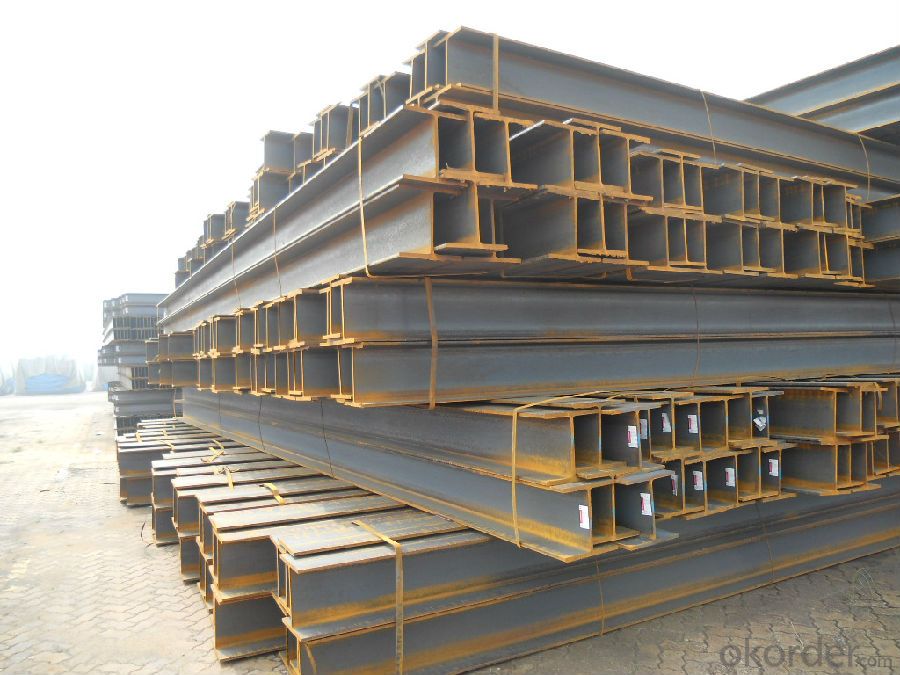
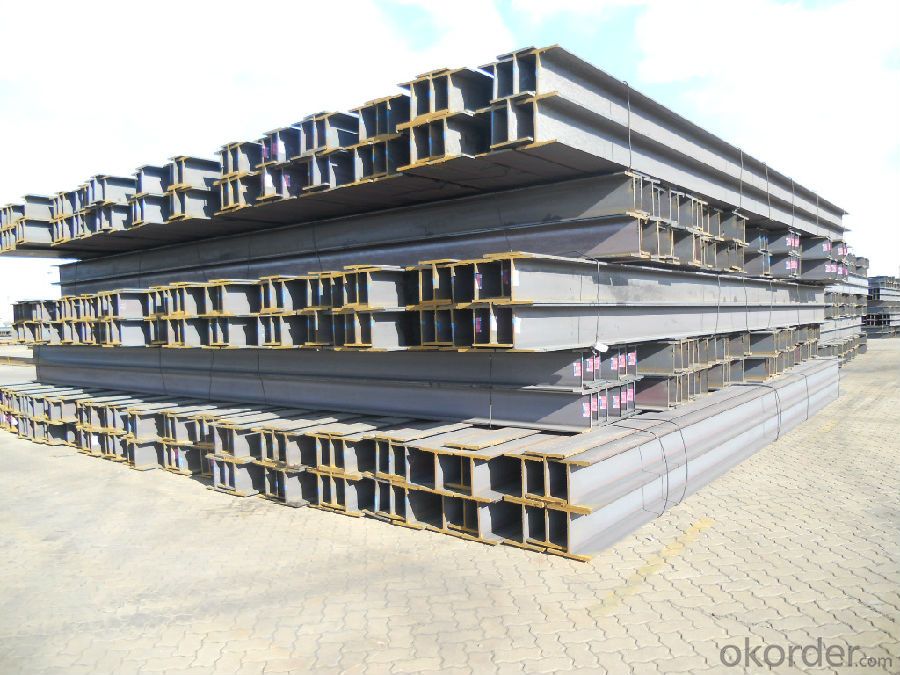
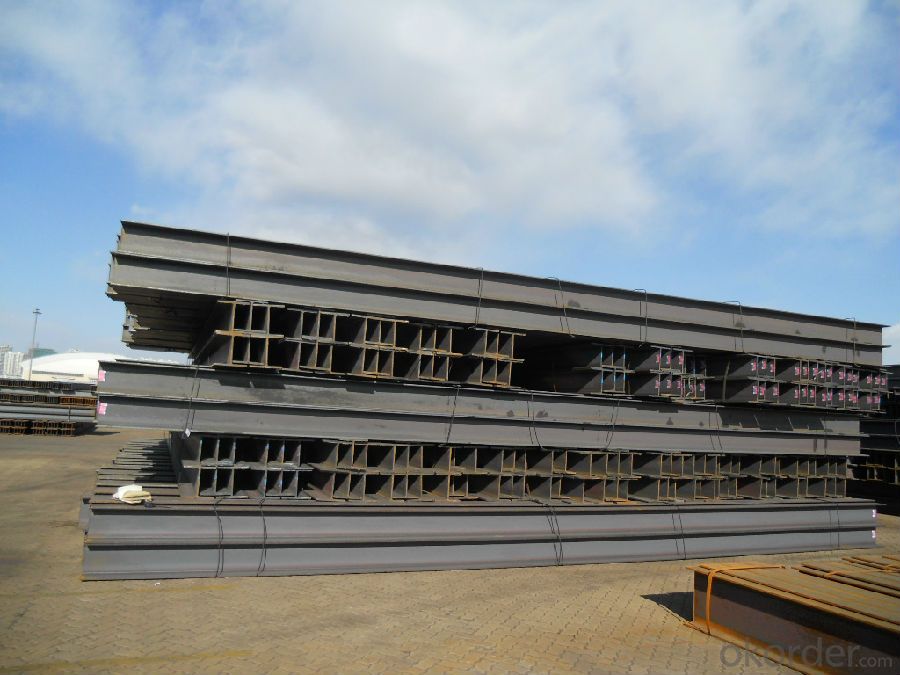
- Q: Are steel H-beams suitable for overhead cranes?
- Steel H-beams are indeed appropriate for overhead cranes, as they possess high strength and durability, making them widely used in the construction industry. With their excellent load-bearing capabilities, they are well-suited for supporting heavy loads commonly encountered in overhead crane applications. The structural design of H-beams enables optimal weight distribution and efficient load transfer, thereby ensuring the stability and safety of the crane system. Additionally, steel H-beams offer versatility and adaptability, thanks to their ease of fabrication and welding, allowing for various crane configurations and meeting diverse requirements. All in all, steel H-beams are a dependable and efficient choice for constructing overhead cranes.
- Q: Are steel H-beams suitable for residential extensions?
- Indeed, residential extensions can be aptly accommodated by steel H-beams. These beams are widely employed in construction owing to their robust structural integrity and ability to bear substantial loads. They offer exceptional reinforcement for supplementary floors, extensions to roofs, and other alterations within residential edifices. Steel H-beams present numerous benefits, encompassing durability, longevity, and resistance against fire, moisture, and pests. Furthermore, they facilitate versatile architectural designs and can be seamlessly integrated into diverse construction systems. All in all, steel H-beams stand as a dependable and efficient selection for residential extensions, guaranteeing the stability and security of the structure.
- Q: Can steel H-beams be used for utility poles?
- No, steel H-beams cannot be used for utility poles. Utility poles are typically made of wood or sometimes concrete, as these materials have certain properties that make them more suitable for this purpose. Wood is lightweight, easy to work with, and provides good insulation against electricity. Concrete poles are durable, resistant to weather conditions, and have a longer lifespan than wood poles. Steel H-beams, on the other hand, are primarily used in construction for structural support, such as in buildings and bridges. While they are strong and can bear heavy loads, they are not designed to withstand the specific requirements of utility poles, such as electrical insulation and resistance to rot and decay. Therefore, it is not recommended to use steel H-beams for utility poles.
- Q: How are steel H-beams transported and handled on construction sites?
- Steel H-beams are usually transported to construction sites using trucks or trailers with specialized equipment capable of lifting and securing the beams. On-site, they are typically lifted by cranes or forklifts and carefully positioned using rigging equipment. To ensure safety, workers use proper lifting techniques and follow specific handling procedures to prevent any damage or accidents during transportation and installation.
- Q: How do steel H-beams provide structural support?
- Structural support is provided by steel H-beams through the utilization of their distinct shape and material properties. The beam's "H" shape allows for the even distribution of weight and forces, resulting in a load-bearing capacity that is both robust and efficient. To support and bear the weight placed upon them, the top and bottom flanges of the H-beam offer a generous surface area. These flanges are connected by a vertical web, which enhances rigidity and aids in resisting bending and twisting forces. The selection of steel as the primary material for H-beams contributes to their strength and durability. Steel possesses high tensile strength, enabling it to withstand significant force without breaking or deforming. Consequently, steel H-beams are a superior choice for supporting heavy loads and ensuring structural stability in various applications, including bridges, buildings, and infrastructure projects. Furthermore, steel H-beams can be easily fabricated and joined together, allowing for the construction of lengthy spans and flexible designs. They can be welded or bolted together, forming larger structures and providing continuous support throughout the entirety of a building or bridge. In summary, steel H-beams efficiently distribute weight and forces, capitalizing on their unique shape and material properties to offer structural support. They possess strength, durability, and flexibility, making them an excellent option for a wide range of construction projects.
- Q: What does H steel.R represent?
- H steel is divided intoWide flange H section steelMid flange H section steel Narrow flange H section steel
- Q: Model H is 580*280*12*14. How much is the theoretical weight of the steel?It's better to list the complete formula, thank you!
- Quality = volume * density, the density of steel, 7.85g/cm3,0.785 is a fast algorithm, the essence should be: unit weight =144.64cm2*100cm*7.85g/cm3=113542.4g=113.54kg. 0.785=100*7.85/1000.
- Q: Can steel H-beams be cut or modified on-site?
- Steel H-beams have the capability to be cut or modified directly at the construction site. Construction projects frequently employ H-beams, which can be tailored to meet exact measurements and specifications. On-site modifications of H-beams might involve cutting the beams to the desired length, drilling holes for fasteners, or welding extra pieces to establish connections or supports. Nevertheless, it is crucial to emphasize the necessity of employing appropriate safety measures and equipment when conducting on-site cutting or modification of steel beams.
- Q: Can Steel H-Beams be used in convention center or exhibition hall construction?
- Yes, Steel H-Beams can be used in convention center or exhibition hall construction. They are commonly used in such projects due to their high strength, durability, and ability to support heavy loads. Steel H-Beams provide structural integrity and can be easily fabricated and installed, making them a reliable choice for large-scale construction projects like convention centers and exhibition halls.
- Q: How do steel H-beams perform in areas with high levels of wind or hurricane force?
- In areas characterized by strong winds or hurricane force, the use of robust and dependable structural systems is of utmost importance. Steel H-beams have proven to be highly effective in such circumstances, thanks to their incredible strength and rigidity. They are capable of withstanding significant wind pressures without bending, twisting, or buckling. The unique design of H-beams, which includes flanges and a web, allows for efficient distribution and resistance of loads. This is especially beneficial when it comes to resisting the lateral forces and uplift pressures caused by strong winds. Additionally, the wide flanges of H-beams provide stability and prevent excessive deflection, ensuring the structure remains intact in high-wind situations. Furthermore, steel H-beams can be further reinforced and protected against wind-related damage. By incorporating additional bracing elements or cross beams, the overall stiffness and stability of the structure can be enhanced. Moreover, applying anti-corrosion coatings to the steel beams safeguards them against the corrosive effects of saltwater, commonly found in hurricane-prone coastal areas. Overall, steel H-beams are designed to excel in areas with high levels of wind or hurricane force. Their exceptional strength, rigidity, and load-bearing capabilities make them an ideal choice for constructing buildings, bridges, or other structures that need to withstand the formidable forces generated by these weather conditions.
Send your message to us
Hot Rolled Steel High Qulity H-BEAM Made In China
- Loading Port:
- Tianjin
- Payment Terms:
- TT OR LC
- Min Order Qty:
- 25 m.t.
- Supply Capability:
- 5000 m.t./month
OKorder Service Pledge
OKorder Financial Service
Similar products
Hot products
Hot Searches
Related keywords
